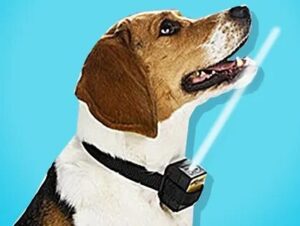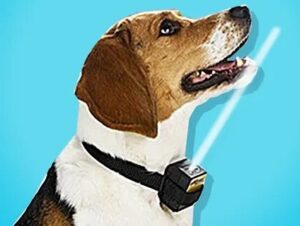Introduction:
Barking is a natural behavior for dogs, but excessive barking can become a problem for both pet owners and their neighbors. The best bark collar for puppies can be an effective solution to control your puppy’s barking and encourage positive behavior. Understanding how bark collars work and the benefits of early training can help you make an informed decision for your pet’s well-being and harmony at home.
Why Consider a Bark Collar for Your Puppy?
Considering a bark collar for your puppy can be a proactive step toward managing excessive barking. Puppies are highly impressionable, and early intervention can prevent barking from becoming a persistent issue. A bark collar can help set clear boundaries and expectations, reducing stress for both you and your puppy. Addressing the behavior early can foster a quieter and more pleasant living environment.
Benefits of Early Training
Early training with a bark collar offers numerous benefits. It helps your puppy understand acceptable behavior from a young age, promoting better habits as they grow. Consistent use of a bark collar can also accelerate the training process, leading to quicker results. Early intervention can prevent more serious behavioral issues, ensuring your puppy becomes a well-adjusted and obedient dog.
Understanding Bark Collar for Puppies:

What Are Bark Collars?
Bark collars are devices designed to control and reduce excessive barking in dogs. They come in various types, including static shock, vibration, spray, and ultrasonic collars. Each type delivers a corrective stimulus when the collar’s built-in sensors detect barking. The goal is to discourage unnecessary barking and reinforce quieter behavior in a humane and controlled manner.
How Do Bark Collars Work?
Bark collars use sensors to detect barking and deliver a corrective stimulus, such as a mild static shock, vibration, spray of citronella, or an ultrasonic sound. The stimulus is designed to be unpleasant but harmless, prompting the dog to stop barking. Over time, the dog associates barking with the unpleasant sensation and reduces the behavior. Adjustable settings allow customization based on the dog’s size, breed, and sensitivity, ensuring the training is effective and humane.
Types of Bark Collars Suitable for Puppies
Vibration Bark Collars
Vibration bark collars are an excellent choice for puppies. These collars use gentle vibrations to interrupt barking, providing a humane and effective training method. Vibration collars are adjustable, allowing you to find the right intensity that works for your puppy without causing distress. This type of collar is ideal for sensitive or smaller dogs, as it offers a non-invasive way to curb excessive barking.
Spray Bark Collars
Spray bark collars use a burst of citronella or unscented spray to deter barking. When the collar detects barking, it releases a harmless spray that startles the puppy and interrupts the behavior. This method is effective for many dogs and is considered one of the most humane options. Spray collars are particularly useful for puppies who may be more sensitive to other types of corrections.
Sound-Activated Bark Collars
Sound-activated bark collars respond to the sound of the puppy’s bark by emitting an ultrasonic sound that is unpleasant to dogs but inaudible to humans. These collars are effective in reducing barking by creating an association between the sound and the barking behavior. Sound-activated collars are a gentle and humane option, making them suitable for young and small puppies.
Static Shock Bark Collars (with caution)
Static shock bark collars deliver a mild static correction when the puppy barks. While these collars can be effective, they should be used with caution, especially with puppies. It’s important to choose a collar with adjustable settings and start at the lowest intensity to avoid causing fear or anxiety. Static shock collars can be a last resort when other methods have proven ineffective, and are always under professional guidance.
Key Features to Look for in a Puppy Bark Collar:

Adjustable Sensitivity Levels
A good puppy bark collar should have adjustable sensitivity levels to accommodate different barking intensities. This feature allows you to customize the collar’s response to your puppy’s specific behavior, ensuring effective and humane training. Adjustable sensitivity levels help prevent overstimulation and ensure the collar is only activated by your puppy’s barking.
Lightweight and Comfortable Design
Puppies are small and still growing, so it’s crucial to choose a bark collar that is lightweight and comfortable. A well-designed collar should not cause discomfort or impede your puppy’s movement. Look for collars made from soft, flexible materials that fit snugly but not too tightly around your puppy’s neck.
Safety and Humane Features
Safety and humane features are essential in a bark collar for puppies. Look for collars that offer multiple correction modes, such as vibration or sound, before resorting to static shock. Additionally, automatic shut-off features that prevent continuous correction and low-battery indicators can enhance safety. Humane collars ensure that training is effective without causing unnecessary stress or harm.
Rechargeable and Waterproof
A rechargeable and waterproof bark collar adds convenience and durability. Rechargeable collars save money on batteries and ensure the collar is always ready for use. Waterproof designs allow the collar to be used in various weather conditions and during water-related activities, ensuring consistent training and effectiveness. A reliable power source and durable construction are key for long-term use.
Top 5 Best Bark Collars for Puppies

1. Vibration Collar:
A vibration collar is an excellent choice for puppies due to its gentle and effective correction method. This collar uses adjustable vibrations to interrupt barking without causing any pain or discomfort. It’s ideal for sensitive puppies and helps in training them to reduce unnecessary barking.
2. Spray Collar:
Spray collars are a humane option that uses a burst of citronella or unscented spray to deter barking. When the puppy bark collars, the collar releases a spray that startles the puppy and stops the behavior. This type of collar is effective for many puppies and is safe and easy to use.
3. Sound-Activated Collar:
Sound-activated bark collars respond to the puppy’s bark by emitting an ultrasonic sound that is unpleasant to dogs but inaudible to humans. This method is gentle and humane, making it suitable for young and small puppies. It helps create an association between barking and the unpleasant sound, reducing excessive barking.
4. Combination Collar:
Combination collars offer multiple correction modes, such as vibration, sound, and spray, in one device. These collars allow you to customize the training approach based on your puppy’s response. Combination collars provide versatility and effectiveness, making them a popular choice among pet owners.
5. Static Shock Collar (for older puppies)
Static shock collars deliver a mild static correction when the puppy barks. While these collars should be used with caution, they can be effective for older puppies that have not responded to other training methods. It’s important to choose a collar with adjustable settings and start at the lowest intensity to ensure humane training.
Read More: How to Test Invisible Fence Collar?
Benefits of Using a Bark Collar for Puppies:
Gentle Training Method
Bark collars provide a gentle and non-invasive training method for puppies. Options like vibration, spray, and sound-activated collars offer effective corrections without causing pain or distress. These humane approaches help train your puppy in a safe and controlled manner.
Reduces Excessive Barking
One of the primary benefits of using a bark collar is the reduction of excessive barking. Bark collars help puppies learn when barking is appropriate and when it is not. This leads to a quieter and more peaceful home environment, reducing stress for both the puppy and the owner.
Promotes Positive Behavior
By curbing unwanted barking, bark collars promote positive behavior in puppies. Consistent use of a bark collar can help reinforce good habits and obedience, making it easier to train your puppy in other areas as well. Positive behavior reinforcement contributes to a well-behaved and happy puppy.
Enhances Bonding with Your Puppy
Using a bark collar can enhance the bonding experience with your puppy by reducing frustration and fostering a calm environment. When excessive barking is controlled, you can focus on positive interactions and training sessions, strengthening the bond between you and your puppy.
Training Tips for Using Bark Collars on Puppies
Introduce the Collar Gradually:
When introducing a bark collar to your puppy, do so gradually to ensure they become comfortable with the device. Start by letting your puppy wear the collar without activating it, allowing them to get used to the feel of it. After a few days, begin using the collar’s correction features at the lowest setting, monitoring your puppy’s reaction closely.
Combine with Positive Reinforcement:
To maximize the effectiveness of a bark collar, combine its use with positive reinforcement. Reward your puppy with treats, praise, or playtime when they display quiet and calm behavior. This approach helps your puppy associate the absence of barking with positive outcomes, reinforcing good behavior.
Monitor Your Puppy’s Response
Keep a close eye on your puppy’s response to the bark collar. Ensure the corrections are effective but not cause distress or anxiety. Adjust the settings as needed and take breaks if your puppy shows signs of discomfort or fear. Regular monitoring helps maintain a positive training experience.
Avoid Overuse
Avoid overusing the bark collar to prevent your puppy from becoming overly reliant on it or experiencing unnecessary stress. Limit the use of the collar to specific training sessions and times when barking is most problematic. This helps your puppy learn to control their barking while ensuring they remain comfortable and happy.
Frequently Asked Questions (FAQs)
Are bark collars safe for puppies?
Yes, bark collars are generally safe for puppies when used correctly. It is important to choose a collar designed specifically for puppies and to start with the lowest setting. Monitoring your puppy’s reaction and following manufacturer guidelines ensures their safety.
At what age can I start using a bark collar on my puppy?
Most experts recommend waiting until a puppy is at least 6 months old before using a bark collar. At this age, puppies are typically mature enough to understand training and respond appropriately to the collar’s corrections.
How long should my puppy wear a bark collar each day?
Puppies should wear a bark collar for limited periods each day, typically no more than 12 hours. This prevents potential skin irritation and ensures your puppy does not become overly dependent on the collar for behavior control.
What should I do if my puppy reacts negatively to the collar?
If your puppy reacts negatively to the collar, stop using it immediately. Try introducing the collar more gradually, using lower settings, or consulting with a professional trainer for guidance. Ensuring your puppy’s comfort and well-being is paramount.
Can bark collars be used for all breeds of puppies?
Bark collars can be used for most breeds of puppies, but it’s important to choose a collar that is appropriate for your puppy’s size and temperament. Some breeds may be more sensitive to certain types of corrections, so select a collar that offers adjustable settings and consider consulting with your veterinarian or a professional trainer for breed-specific advice.
Conclusion:
Summary of Key Points
Choosing the best bark collar for your puppy involves understanding the different types of collars available, such as vibration, spray, sound-activated, combination, and static shock collars. Each type offers unique benefits and should be selected based on your puppy’s size, temperament, and training needs. Key features to look for include adjustable sensitivity levels, lightweight and comfortable design, safety and humane features, and rechargeable and waterproof options. Combining the use of a bark collar with positive reinforcement and closely monitoring your puppy’s response is essential for effective and humane training.
Final Thoughts on Choosing the Best Bark Collar for Puppies
Selecting the right bark collar for your puppy is a significant decision that can positively impact their behavior and your relationship. It’s crucial to choose a collar that is both effective and comfortable for your puppy, ensuring that it aids in training without causing distress. Consider the specific needs of your puppy, including their breed and age, and opt for a collar that offers customizable settings and humane correction methods.
Encouragement to Train with Patience and Care
Training your puppy with a bark collar requires patience and care. Introduce the collar gradually, combine its use with positive reinforcement, and avoid overusing it to ensure your puppy’s well-being. Remember, the goal is to guide your puppy towards positive behavior gently and effectively. With consistent and compassionate training, you can help your puppy develop good habits and create a harmonious home environment. Your dedication and patience will pay off, resulting in a well-behaved and happy puppy.

